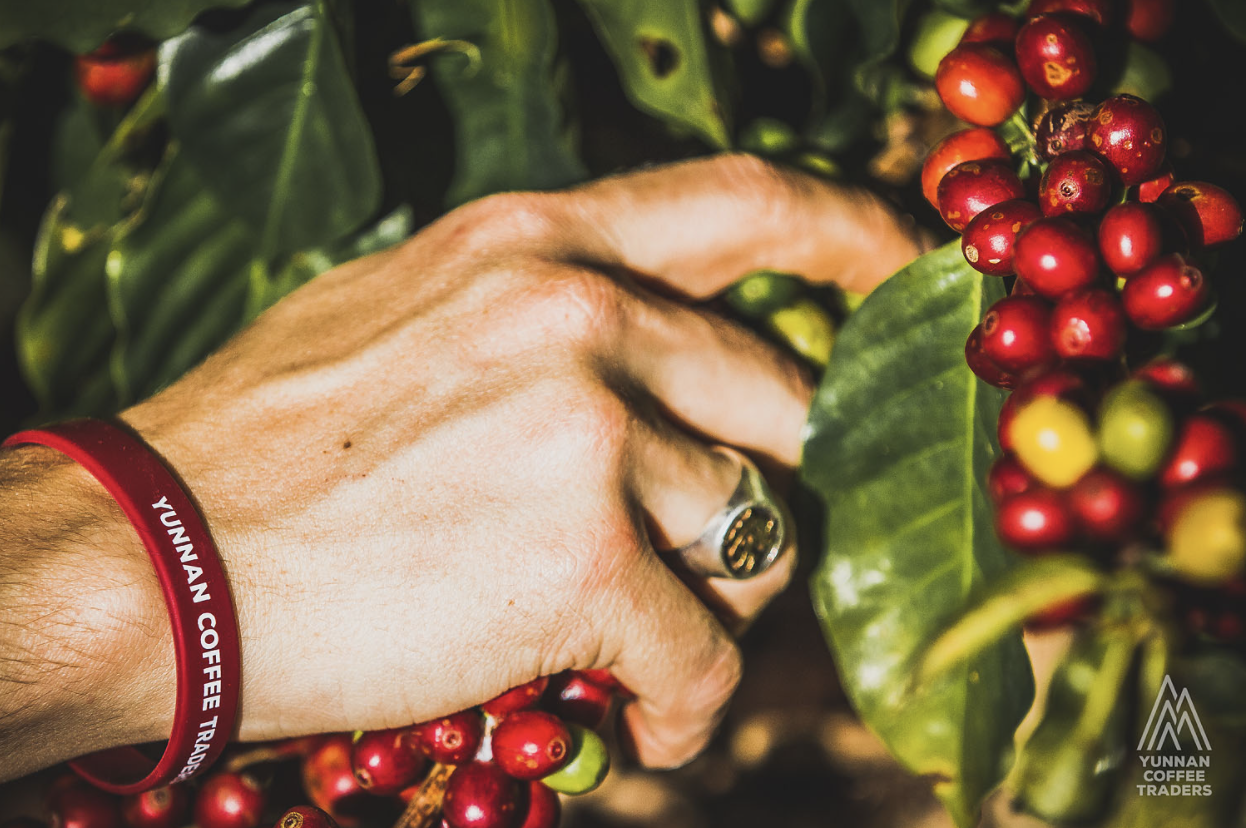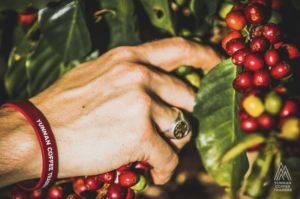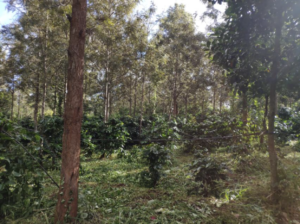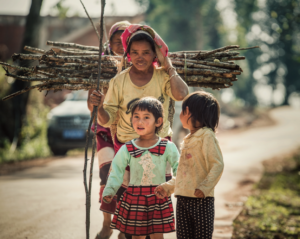
A hands-on season, harvest season!
For many of the Asian origins we source coffee from, the best time to visit producers is during harvest season, which runs from around December to March. On our recent trip to Thailand, we visited Sirinya Coffee in Chiang Rai province and saw the harvest in full swing. Thanks to the generosity of Oil and Goh, we got to try early-type samples, see their processing facilities and get an idea of the quality and characteristics of this season’s coffees, which we are bringing to the UK later this year.
Harvest season is a labour-intensive period, particularly when producing specialty coffee, with coffee cherries picked and sorted by hand to ensure that only ripe and undamaged fruits make it through to the processing stage. As cherries do not ripen at the same rate within an individual tree, harvesters must selectively hand-pick cherry as and when they are at peak ripeness. Also, it is not enough to simply pick all red cherry as there are many shades of red and optimum ripeness varies depending on the variety of coffee grown. In fact, Yunnan Coffee Traders, our producer partners in China, used to distribute rubber bracelets the colour of a ripe cherry.

YCT’s red wristbands match the colour of ripe cherry. Photo credit: Yunnan Coffee Traders.
During harvesting days, picking usually takes place early in the morning and then later in the afternoon, avoiding the hottest part of the day. This is the case for the farms we work with in Yunnan where there is barely any shade. However, in Myanmar, coffees grown in estate farms in Pyin Oo Lwin, Mandalay region, tend to be shade-grown coffee. Under the cover of large trees such as macadamia and silver oak, pickers can actually work throughout the day.
The real challenge during harvest is having the people power to do the work. In contrast with large commercial farms which use machinery to strip pick coffee trees, most of the coffees that we source come from smallholder families that have a small piece of land where coffee is grown amongst other cash crops. The work to grow and harvest coffees is usually carried out amongst family members. In the Philippines, through organisations such as Kalsada, smallholder families are trained and supported in all aspects of coffee production, from growing through to harvesting and processing. In China, where we work with bigger farms, there are hill tribes such as the Lahu that come into the area specifically for harvest season to pick the cherry.

Shwe Yi Mon – Harvest time under the shade in Myanmar.
For us, harvest time is an important opportunity to cup type samples – some of the earliest coffees that are produced early to mid-harvest which give an indication of the coffee’s quality for that season. We can provide our feedback, not as criticism but as a way of supporting each other and collaborating between producers, roasters and importers. For example, last year we were having very low moisture readings for one coffee lot, which can have implications for quality and shelf life further down the line. By providing this feedback during the harvest season, the producers were able to adjust their drying procedures to increase the moisture content.
Coffee goes through so many hands. The hands of people picking, floating, sorting, bagging and transporting. When it ends up in your cup it is quite hard to comprehend the number of people involved. Coffee is an intrinsic part of daily life, and we usually take it for granted. Harvest time is a season to appreciate the hard work of all actors involved from nurturing coffee seedlings in the nursery of a remote farm all the way until it arrives in a sack to the UK.

Lahu hill tribes who work on the Yunnan coffee plantations. Photo credit: Yunnan Coffee Traders.

Visiting Sirinya processing facilities in Chiang Rai province, Thailand.
